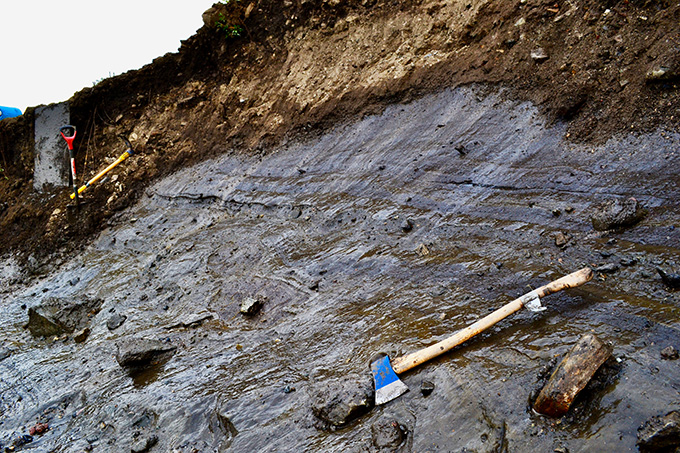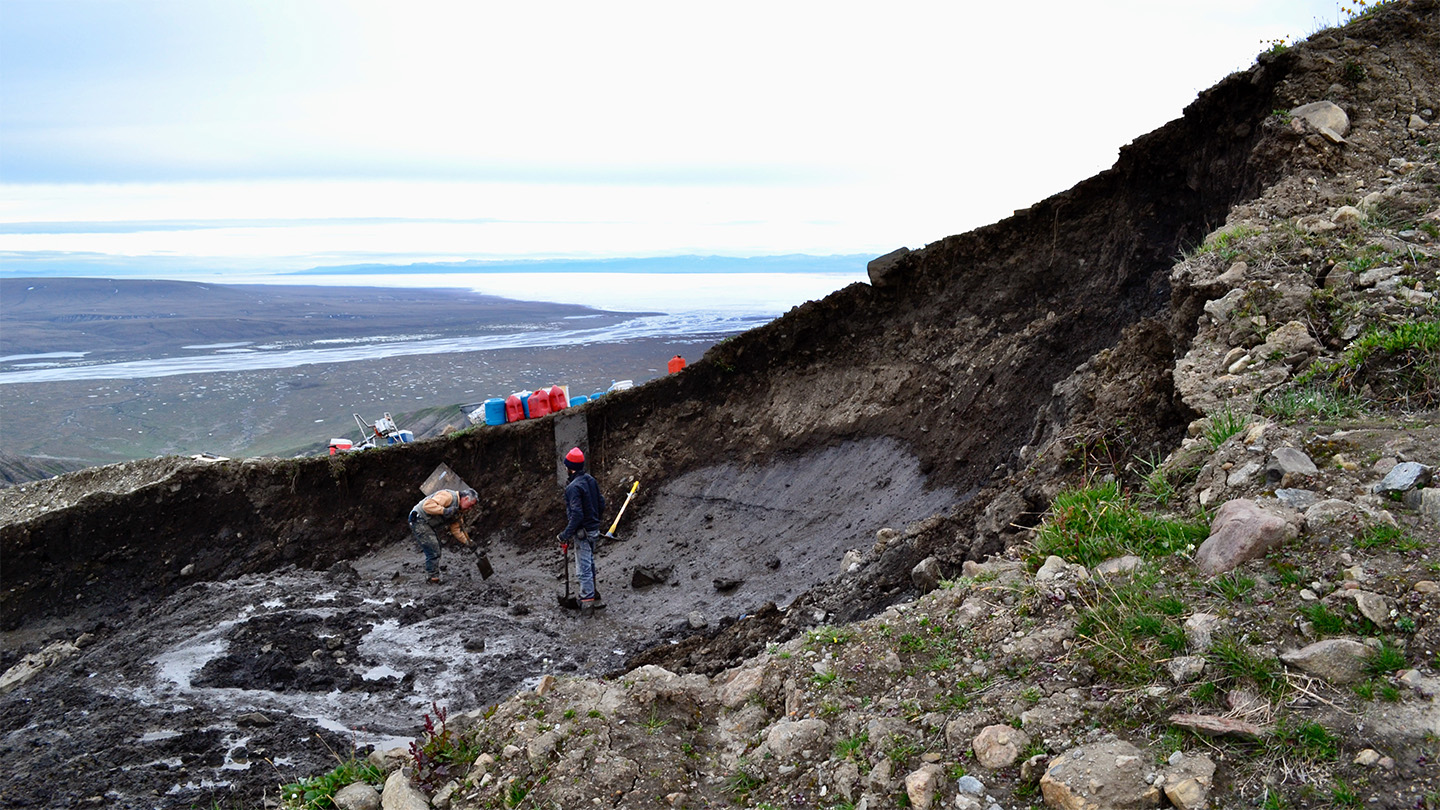This long-buried glacier ice is at least 770,000 years old
Revealed by a landslide, these glacial remnants could be more than a million years old

Researchers were studying a buried fossil forest in northeastern Canada. While poking around the aftermath of a landslide caused by melting permafrost, they uncovered remnants of a very ancient glacier.
Stéphanie Coulombe
Share this:
- Share via email (Opens in new window) Email
- Click to share on Facebook (Opens in new window) Facebook
- Click to share on X (Opens in new window) X
- Click to share on Pinterest (Opens in new window) Pinterest
- Click to share on Reddit (Opens in new window) Reddit
- Share to Google Classroom (Opens in new window) Google Classroom
- Click to print (Opens in new window) Print
By Nikk Ogasa
Researchers have discovered remains of a very ancient glacier — one that could be more than a million years old.
It lay hidden on a remote island in the Canadian Arctic. Climate change revealed the ice, which may be the Arctic’s oldest glacier remnant buried in permafrost. (Permafrost is ground that’s been frozen for at least two years straight.) But the clock is ticking for researchers keen on studying this ice. A warming climate risks melting it.
A glacier’s icy layers are like the pages of a logbook. The gas bubbles, chemicals and particles trapped in it all hint at what the climate and atmosphere were like in the distant past.
Precious few reports exist of glacial ice more than 20,000 to 26,000 years old. Such ice would have existed the last time that polar ice sheets peaked in volume.
Still, scientists had hoped to look further back in time. This newfound ice might offer them a rare chance to see what it was like in the early Pleistocene. This epoch started some 2.58 million years ago. Back then, Earth had interglacial periods, warm spells that separated ice ages.
The Pleistocene’s climate shifts are similar to what we might see in the future, says Daniel Fortier. A geomorphologist, he works at the University of Montreal in Canada. There, he studies Earth’s changing features.

Ice for the ages
In 2009, Fortier was part of a team studying a buried fossil forest on Bylot Island. That’s in Canada’s far north Nunavut Territory. Here, they stumbled across sites of recent landslides. Triggered by thawing permafrost, the landslides had exposed translucent, layered ice a few meters underground. This was just above the fossil forest.
The team used radiocarbon dating to gauge the ice’s age. Much to Fortier’s surprise, organic (carbon-based) matter in the ice was more than 60,000 years old. “I was not expecting that at all,” he says. The team share its findings January 1 in Geology.
The researchers also studied minerals in sediments above the ice. The alignment of magnetic minerals in it had flipped, they realized. This pointed to a time roughly 770,000 years ago when the Earth’s north and south magnetic poles swapped spots. That clue indicates the newfound ice is at least that old. Previous research had dated the fossil forest below the glacier to at least 2.4 million years old. So that’s the maximum age of this ice.
The find, Fortier says, shows how resilient permafrost is. Computer simulations of what the future climate may look like suggest that permafrost will completely thaw in many regions by the end of this century.
But this preserved glacier has persisted through interglacial periods that were warmer than today, he notes. As such, he adds, “I don’t think permafrost will disappear so fast. The system is more resilient than we think.”







